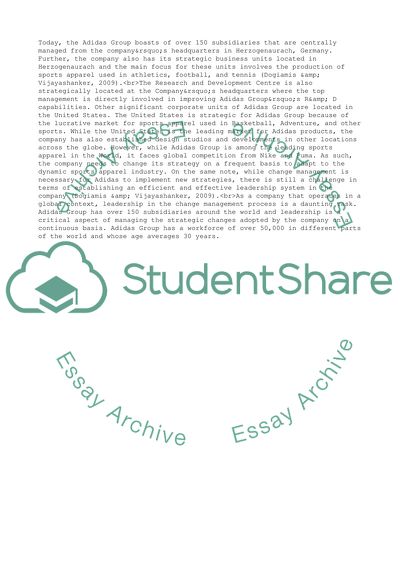Cite this document
(“Change Management as a Leadership Challenge: The Adidas Group Case Study”, n.d.)
Change Management as a Leadership Challenge: The Adidas Group Case Study. Retrieved from https://studentshare.org/management/1684382-critically-reflective-essay
Change Management as a Leadership Challenge: The Adidas Group Case Study. Retrieved from https://studentshare.org/management/1684382-critically-reflective-essay
(Change Management As a Leadership Challenge: The Adidas Group Case Study)
Change Management As a Leadership Challenge: The Adidas Group Case Study. https://studentshare.org/management/1684382-critically-reflective-essay.
Change Management As a Leadership Challenge: The Adidas Group Case Study. https://studentshare.org/management/1684382-critically-reflective-essay.
“Change Management As a Leadership Challenge: The Adidas Group Case Study”, n.d. https://studentshare.org/management/1684382-critically-reflective-essay.


